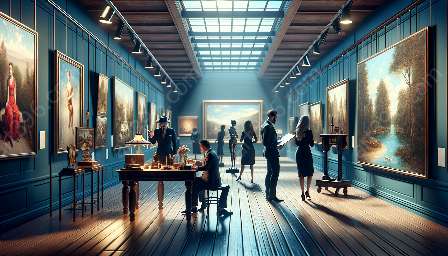Art holds a mirror to society, reflecting the beliefs, values, and experiences of the artist. Understanding the relationship between an artist's personal beliefs and their art requires a nuanced approach that encompasses biographical art criticism and art criticism.
Biographical Art Criticism
Biographical art criticism delves into the life, experiences, and personal beliefs of the artist to uncover the influences on their artwork. It acknowledges that an artist's identity, upbringing, cultural background, and pivotal life events shape their artistic expression.
By studying the artist's biography, one can gain insights into the formative experiences and ideological influences that permeate their art. For example, Frida Kahlo's tumultuous personal life, political activism, and physical suffering are integral to understanding her powerful and emotive self-portraits and surrealist artworks.
Art Criticism
Art criticism focuses on the formal analysis, interpretation, and evaluation of an artwork. However, when examining art through the lens of an artist's personal beliefs, it becomes essential to consider how their worldview informs the themes, symbols, and visual language in their creations.
An artist's personal beliefs can manifest in various ways within their art. It may be evident in the choice of subject matter, the use of symbolism, or the overarching message conveyed through their body of work. For instance, the religious fervor and spiritual introspection of Renaissance artist Michelangelo are palpable in the grandeur and divine themes of his masterpieces, such as the Sistine Chapel ceiling paintings.
The Intersection of Personal Beliefs and Art
Biographical art criticism and art criticism converge at the juncture where an artist's personal beliefs intersect with their art. The dynamics of this intersection can be multifaceted, with the artist's convictions infusing their creative process and imbuing their work with layers of meaning.
It is crucial to recognize that an artist's personal beliefs can both consciously and subconsciously permeate their artistic output. These beliefs might be overtly conveyed through explicit imagery or narratives, or subtly woven into the aesthetic choices and visual language of their art.
Challenges and Considerations
When exploring the relationship between an artist's personal beliefs and their art, several challenges and considerations come to the fore. Firstly, avoiding reductionism is paramount. While an artist's personal beliefs undoubtedly influence their art, the complexity and depth of their creative expression cannot be simplistically attributed solely to their worldview.
Additionally, the interpretation of an artist's personal beliefs in their art can be subjective. Different viewers may perceive and interpret the same artwork through disparate cultural, social, and personal lenses, leading to a plurality of meanings.
Furthermore, the evolution of an artist's beliefs over time adds another layer of complexity. As an artist's worldview undergoes shifts and transformations, their art may reflect these changes, necessitating a holistic understanding of their personal trajectory.
Conclusion
Exploring the relationship between an artist's personal beliefs and their art allows for a deeper appreciation and comprehension of creative works. Through the amalgamation of biographical art criticism and art criticism, we can unravel the intricate tapestry of an artist's identity, experiences, and convictions interwoven with their art, enriching the discourse on artistic expression and human communication.

